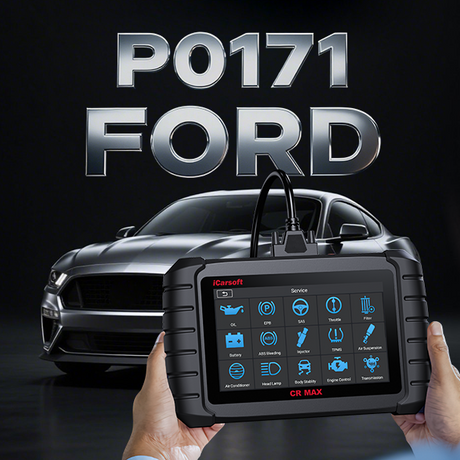Table of Contents
The P2459 OBD-II code indicates a diesel particulate filter (DPF) regeneration frequency issue in diesel vehicles like VW TDI or Ford Powerstroke. This guide explains P2459, its causes, symptoms, and fixes to help you maintain your vehicle’s performance and emissions system.
1. What is P2459?
P2459 is an OBD-II diagnostic trouble code (DTC) defined as "Diesel Particulate Filter Regeneration Frequency." It means the Engine Control Module (ECM)—the car’s computer—detects that the DPF is regenerating too often or at irregular intervals. This code applies to diesel vehicles equipped with a DPF, a device that traps soot to reduce emissions.
How DPF Regeneration Works
The DPF captures soot from diesel exhaust. Regeneration burns off this soot at high temperatures to keep the filter clean. The ECM triggers regeneration based on sensors like the DPF pressure sensor. If regeneration happens too frequently, P2459 is set, indicating a potential issue in the system.

2. Causes of P2459 OBD-II Code
P2459 can be triggered by several issues in the DPF or related systems. Common causes include:
- Faulty DPF Pressure Sensor: A malfunctioning sensor gives incorrect readings. A 2016 VW Passat TDI had P2459 due to a failed DPF pressure sensor.
- Excessive Soot in DPF: Too much soot buildup forces frequent regeneration. This occurred in a 2015 Ford F-250 Powerstroke with short-trip driving.
- EGR System Issues: A clogged EGR valve or cooler increases soot production. A 2017 Chevrolet Silverado Duramax showed P2459 due to an EGR fault.
- Exhaust System Leaks: Leaks in the exhaust manifold or DPF piping affect pressure readings. A 2014 Ram 2500 had P2459 from an exhaust leak.
- Fuel Injector Problems: Faulty injectors cause incomplete combustion, increasing soot. A 2018 BMW X5 35d triggered P2459 due to a clogged injector.
- Short-Trip Driving: Frequent short trips prevent proper regeneration. A 2019 Audi Q7 TDI had P2459 from city-only driving.
3. Symptoms of P2459 in Diesel Vehicles
P2459 can affect your vehicle’s performance and emissions. Look for these signs:
- Check Engine Light On: The dashboard warning light (MIL) illuminates.
- Limp Mode: The engine reduces power to protect the system.
- Reduced Fuel Efficiency: Frequent regeneration burns extra fuel.
- Exhaust Overheating: Excessive regeneration heats up the exhaust system.
- Frequent Regeneration Cycles: You may notice the vehicle regenerating more often than normal.
4. Vehicles Prone to P2459 Code
P2459 is common in diesel vehicles with DPF systems, especially those with high mileage or short-trip driving habits. Examples include:
- VW Passat TDI (2012-2016): Faulty DPF pressure sensor, limp mode.
- Ford F-250 Powerstroke (2011-2017): Soot buildup, reduced fuel efficiency.
- Chevrolet Silverado Duramax (2013-2018): EGR issues, frequent regeneration.
- Ram 2500 (2013-2019): Exhaust leaks, check engine light.
- BMW X5 35d (2014-2018): Fuel injector problems, exhaust overheating.
- Audi Q7 TDI (2015-2020): Short-trip driving, regeneration issues.

5. How to Diagnose P2459 OBD-II Code
Diagnosing P2459 requires checking the DPF system and related components. Follow these steps:
Step 1: Scan for Codes
Use an OBD-II scanner to confirm P2459 and check for related codes (e.g., P2463 for DPF soot accumulation or P0401 for EGR issues).
Step 2: Check DPF Pressure Sensor
Inspect the DPF pressure sensor and its wiring for damage. Use a multimeter to test sensor voltage (should be 0.5-4.5V, like testing a light switch).
Step 3: Monitor Regeneration Cycles
Use a scanner to check the frequency of regeneration cycles. Compare with manufacturer specs (e.g., every 200-300 miles under normal conditions).
Step 4: Inspect the EGR System
Check the EGR valve and cooler for clogs or leaks, as they can increase soot production.
Step 5: Check for Exhaust Leaks
Inspect the exhaust system, including the DPF and exhaust manifold, for leaks that affect pressure readings.
Step 6: Evaluate Driving Habits
Determine if short-trip driving is preventing proper regeneration (e.g., trips under 20 minutes).
Tip: Use a scanner with live data to monitor DPF pressure and regeneration status for accurate diagnosis.
6. How to Fix P2459 on VW TDI and Other Diesel Vehicles
Based on your diagnosis, apply these solutions to resolve P2459:
- Replace DPF Pressure Sensor: Install a new sensor (cost: $50-$150). Fixed a 2016 VW Passat TDI.
- Force DPF Regeneration: Use a scanner to manually initiate regeneration or drive at highway speeds for 20-30 minutes (cost: $0-$100). Helped a 2015 Ford F-250 Powerstroke.
- Clean or Replace EGR Valve/Cooler: Clean the EGR system or replace faulty parts (cost: $100-$300). Resolved the issue in a 2017 Chevrolet Silverado Duramax.
- Repair Exhaust Leaks: Fix leaks in the exhaust system (cost: $50-$200). Corrected P2459 in a 2014 Ram 2500.
- Service Fuel Injectors: Clean or replace clogged injectors (cost: $150-$500). Fixed a 2018 BMW X5 35d.
- Adjust Driving Habits: Take longer drives (30+ minutes) to allow proper regeneration (cost: $0). Helped a 2019 Audi Q7 TDI.
7. Preventive Measures for P2459
Prevent P2459 by maintaining your DPF system with these tips:
- Take longer drives (30+ minutes) weekly to allow passive DPF regeneration.
- Use high-quality diesel fuel to reduce soot production.
- Inspect and clean the EGR system during routine maintenance (every 50,000 miles).
- Check the DPF pressure sensor and exhaust system for leaks annually.
- Service fuel injectors regularly to ensure proper combustion.
8. P2459 Diagnostic Summary
The P2459 OBD-II code indicates a DPF regeneration frequency issue in diesel vehicles, often caused by faulty sensors, soot buildup, or driving habits. This guide provides steps to diagnose and fix P2459 in vehicles like VW TDI and Ford Powerstroke, ensuring optimal performance and emissions control.












